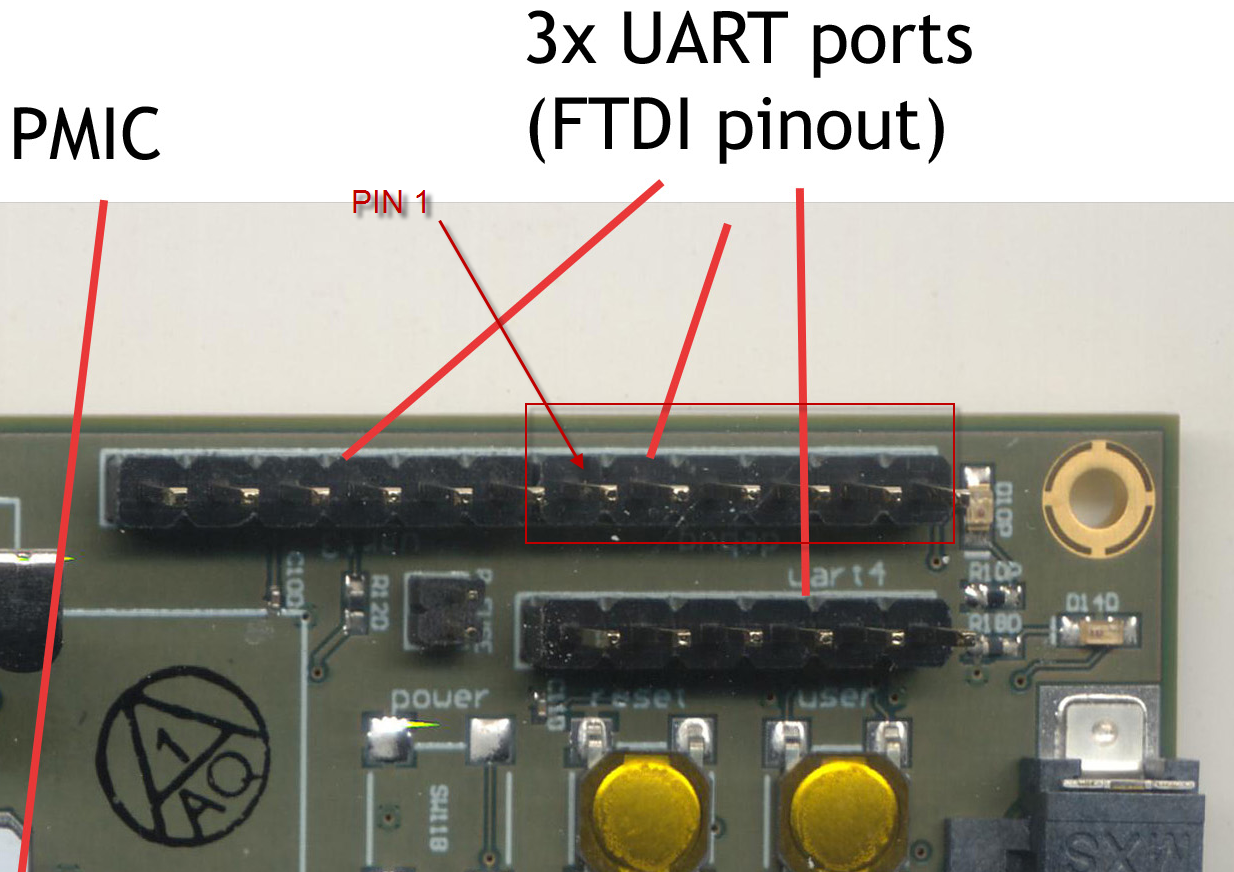Using Novena PVT1
Contents
Quickstart Guide
logging in
The default login password is root / kosagi
getting a console
The image, by default intends for you to plug in an HDMI monitor, keyboard, and mouse, and use the device a bit like a (rudimentary) desktop environment. By default, console spew goes to HDMI and not to a TTY.
using a TTY
If you want to use a TTY, you should use the serial port labeled "debug". It's the at the very top left, underneath the LED labeled "pwr". There are actually three debug UARTs located in the cluster there.

You can use a standard FTDI debug cable, such as this one from Sparkfun:
https://www.sparkfun.com/products/9717
Pin 1 (ground) is away from the LED.
The TTY settings are 115200 N-8-1. Again, with the current initial image, you'll just see u-boot spew and then it will appear to "hang" as all the remaining spew is sent to the HDMI console.
upgrading
The PVT1 units all come with debian/wheezy. We're entirely relying upon debian apt-get for package upgrades. Of course our kernel is custom, and we don't have a way to package and distribute that yet.
installing u-boot
u-boot can be built & installed following the procedure here:
http://www.kosagi.com/w/index.php?title=Building_novena_firmware#Getting_and_building_u-boot
fixing a brick
The kernel and device tree are located on a FAT partition. If you happen to brick your device, you can take out the microSD card and mount it on a PC and update the kernel, uboot script, and device tree.
Also, there is a feature to boot a backup kernel by holding down the "user" button during power-on. The feature...mostly...works.